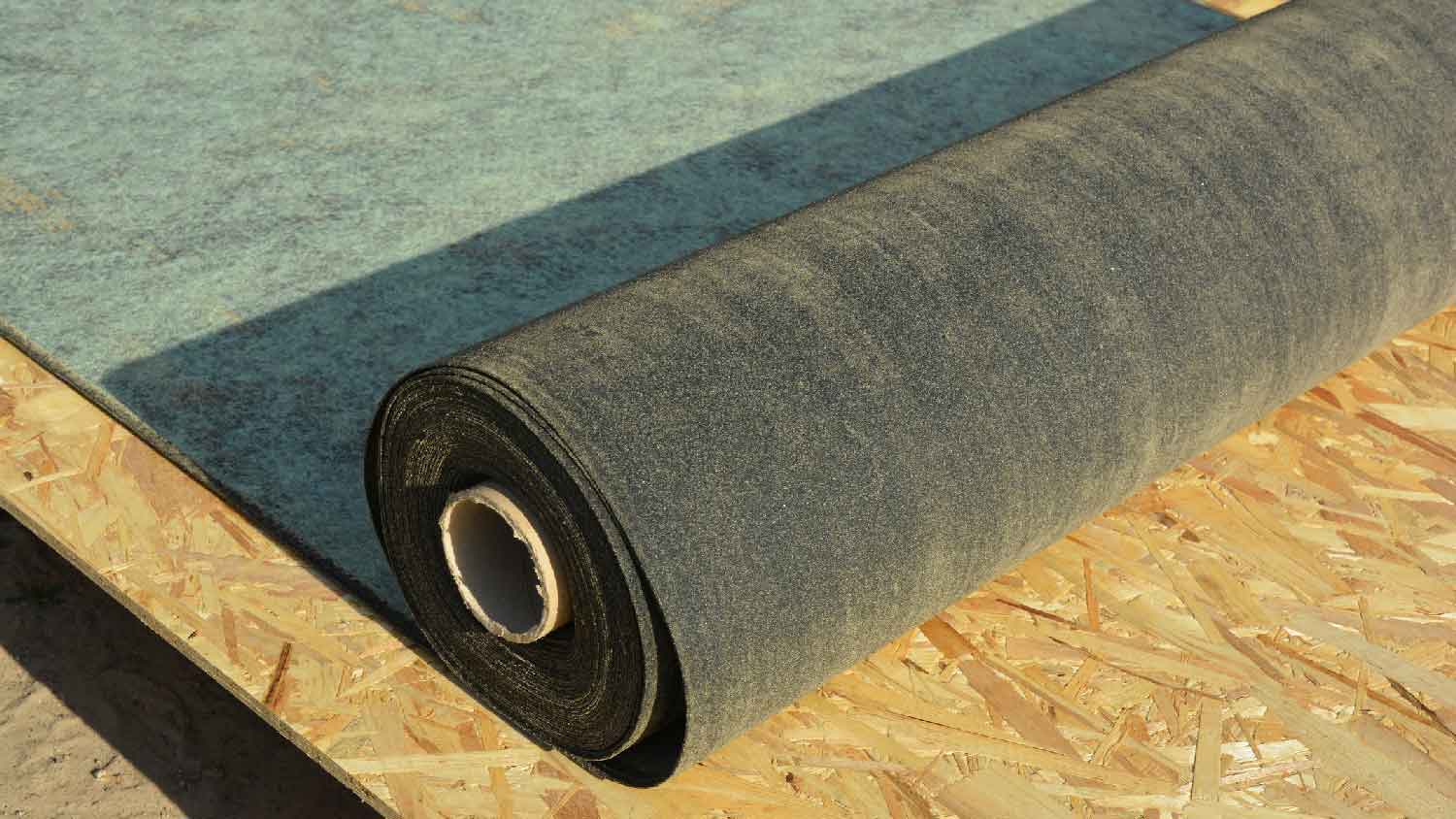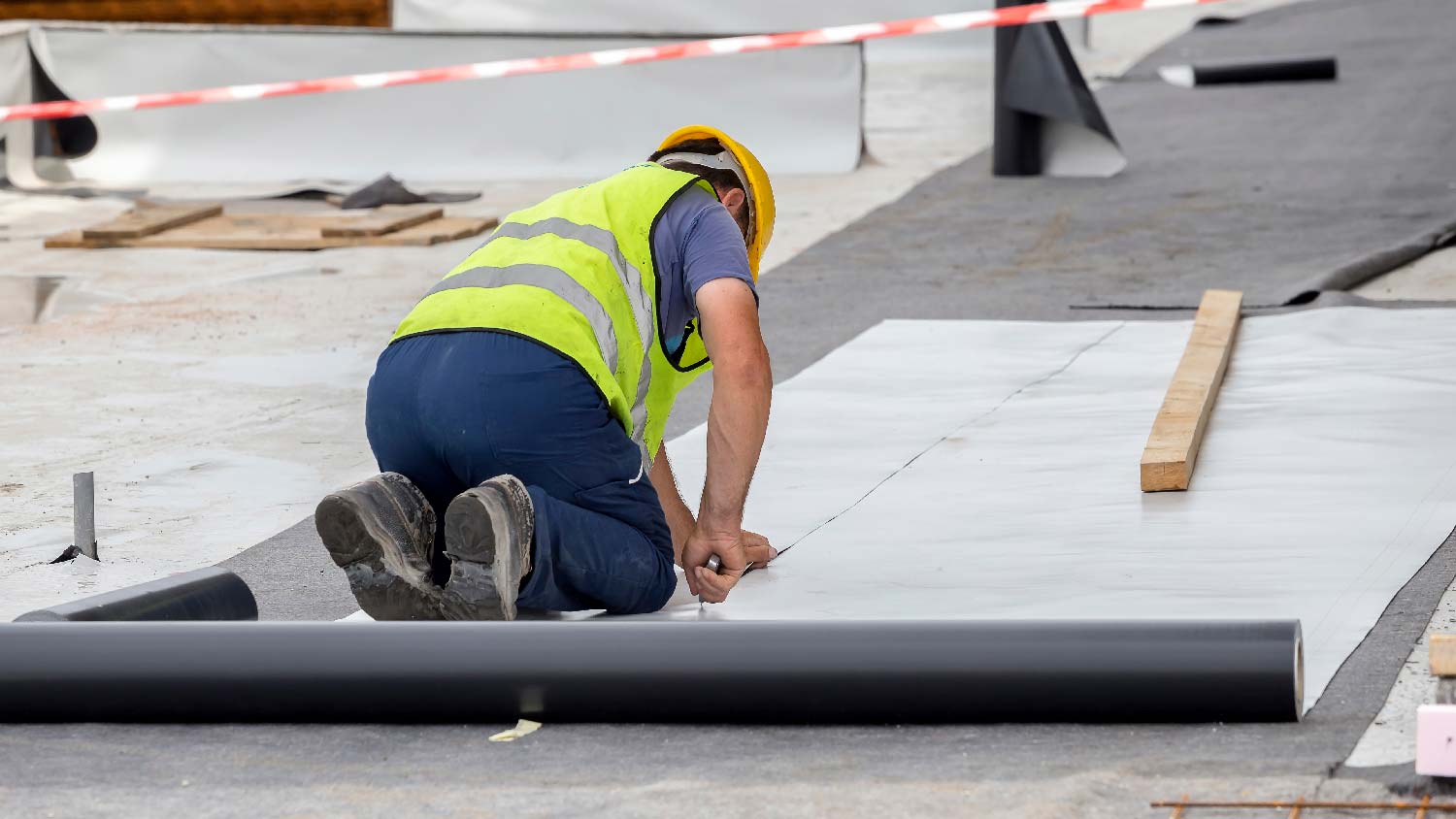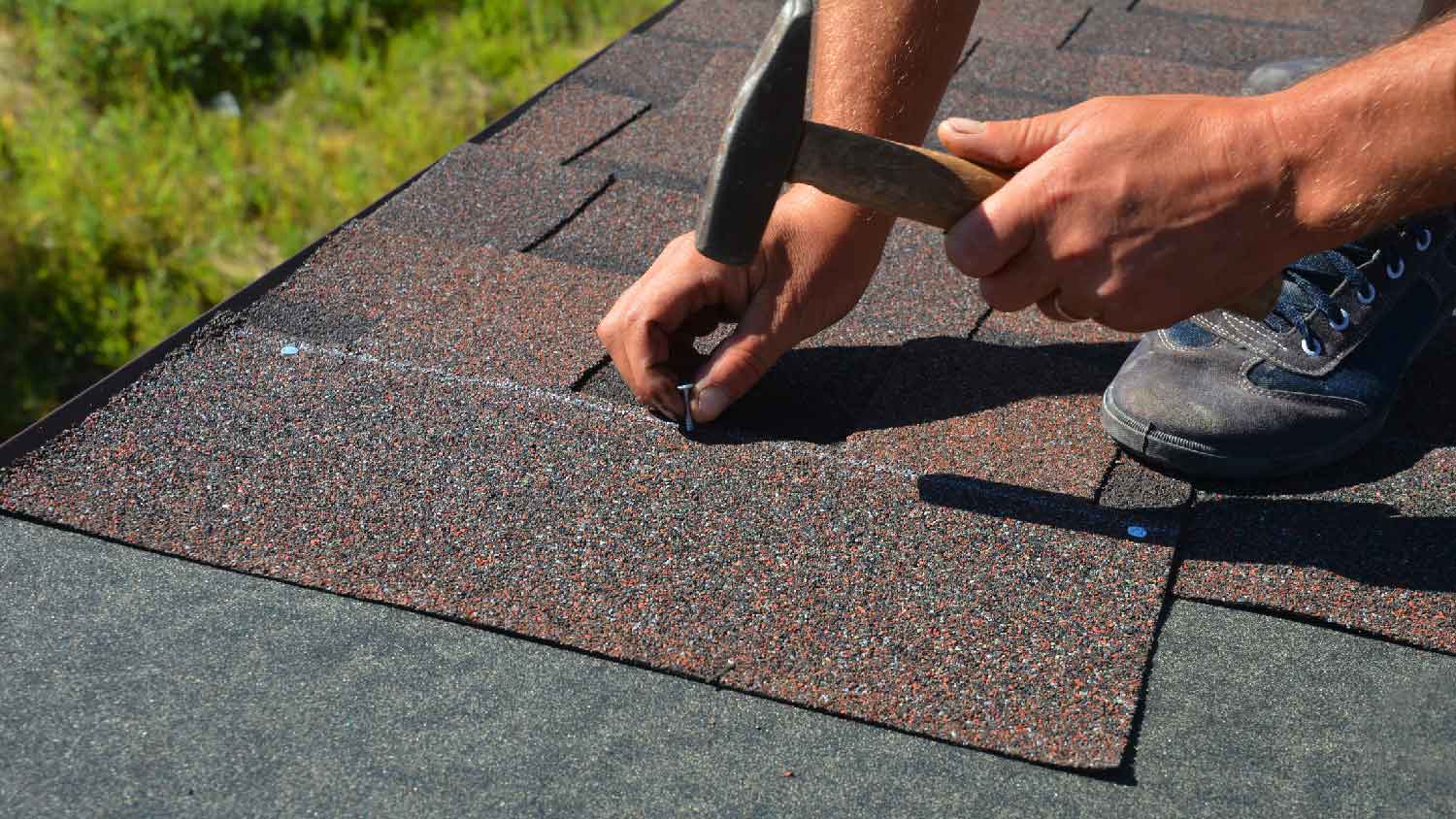3 Roof Underlayment Types to Consider
Understand the differences between types of roof underlayment


Roof underlayment is an important part of your roof’s ability to stay insulated and keep water out of your home. This layer is applied over the roof sheathing, providing a foundation to attach the shingles to and underneath the shingles.
Roofers commonly use several types of underlayment materials, each with its own benefits and drawbacks. Learn the differences between underlayment types and how to select the best one for your roof.
| Underlayment Material | Expected Life Span (In Years) |
|---|---|
| Felt | 10–25 |
| Synthetic | 25–35 |
| Rubberized asphalt | 25–35 |
1. Felt Underlayment

Felt underlayment, also known as felt paper or roofing felt, is one of the oldest and most commonly used underlayment materials. It’s made of organic paper or felt matting that’s been saturated in asphalt to make it water-resistant.
It comes in two weights: 15 pounds per 100 square feet (No. 15 felt) and 30 pounds per 100 square feet (No. 30 felt). No. 30 felt is often used for house roofing, and No. 15 felt is mainly used for sheds and other smaller detached structures.
| Pros | Cons |
|---|---|
| Most affordable | Prone to tearing |
| Provide better breathability | Can’t be left exposed |
| Water-resistant | Not fully waterproof |
Best for: Budget-conscious homeowners in areas without severe weather
2. Synthetic Underlayment

Synthetic underlayment is a newer type that has grown in popularity over the past few decades. The material is made of woven synthetic polymers like polypropylene and polyethylene. Synthetic underlayment is more durable than felt and offers resistance to mold and fungal growth. It’s also heat-resistant, making it a good choice in areas with extreme temperatures or for metal roofs, which can trap excess heat.
Although it’s a popular choice, one of the problems with synthetic underlayment is that it may trap moisture due to being less permeable than felt underlayment.
| Pros | Cons |
|---|---|
| Faster to install | More expensive |
| Lightweight | May trap moisture |
| Durable | Not eco-friendly |
Best for: Homeowners looking for a long-lasting durable underlayment
3. Rubberized Asphalt Underlayment

Rubberized asphalt underlayment, also known as self-adhered underlayment, is made of asphalt and rubber polymers. Unlike felt and synthetic underlayments, rubberized asphalt has a sticky backing that allows it to adhere to the roof decking without fasteners.
It’s the most waterproof material out of the three options and provides the highest level of protection against roof leaks and extreme temperatures. It’s also the most expensive of the three and has the highest roof underlayment replacement cost.
| Pros | Cons |
|---|---|
| Best waterproofing | Most expensive option |
| Easy to patch | Less coverage per roll |
| Doesn’t break, tear, or crack | Difficult to install |
Best for: Homeowners in areas with extreme temperatures who want the highest level of waterproofing
Things to Consider When Choosing Roof Underlayment
The best underlayment type for your roof depends on several factors, including cost, weather, and your roof’s style and material.
Budget
The three types of underlayment vary in cost, so your budget may dictate which kind you choose. Felt underlayment averages between $0.05 and $0.50 per square foot, synthetic underlayment averages between $0.15 and $0.55 per square foot, and rubberized asphalt underlayment is the most expensive at an average of $0.50 to $0.90 per square foot.
Type of Roof
Your roof’s material can also be a deciding factor in which underlayment is best. Asphalt shingle roofs work well with rubberized asphalt or felt underlayment, while metal roofs may need a synthetic underlayment for heat resistance.
Climate
The kind of weather your home experiences the most will help you decide on the right underlayment material. Felt underlayment is a budget-friendly choice in areas without extreme temperatures or high winds. Homeowners in areas that experience very hot or very cold weather, high winds, or heavy snow or rain should opt for synthetic or rubberized asphalt underlayment.
Can I Install Roof Underlayment Myself?
Homeowners with extensive roofing experience may be able to tackle installing roof underlayment, but this job is often best left to the pros. A local roofing company will be able to advise you about the right material for your roof and correctly install the underlayment.
Any roof work involves significant safety risks, especially when installing material that may be slippery to walk on and difficult to handle. Hiring a roofer means that trained and experienced professionals will be able to safely tackle the job and ensure your home is properly protected against the elements.





- Roofers
- Metal Roofing
- Roof Repair
- Roof Inspection
- Vinyl Siding Repair Contractors
- Flat Roofing Companies
- Commercial Roofing
- Emergency Roofing Companies
- Leaky Roof Repair
- Metal Roof Repair
- Business Roof Repair
- Flat Roof Repair
- Tile Roof Repair
- Slate Roofers
- Rubber Roofers
- Roofing & Siding
- Metal Roof Installation
- Affordable Roofing
- Roof Sealing
- Attic Ventilation Contractors
- Felt vs. Synthetic Underlayment: Key Differences
- The 3 Best Underlayments for Metal Roofs
- 7 Common Problems With Synthetic Roof Underlayment
- How to Install Sheet Vinyl Flooring Like a Pro
- 30 Common Roofing Mistakes You Need to Know
- How to Build a Roof For Your Home, From Start to Finish
- 2024 Metal Roof vs. Shingles Cost Comparison Guide
- How to Install Metal Roofing Like a Pro
- Estimate Your Flooring Cost With These Factors
- Learn the Pros and Cons of Asphalt Shingle Roofing










